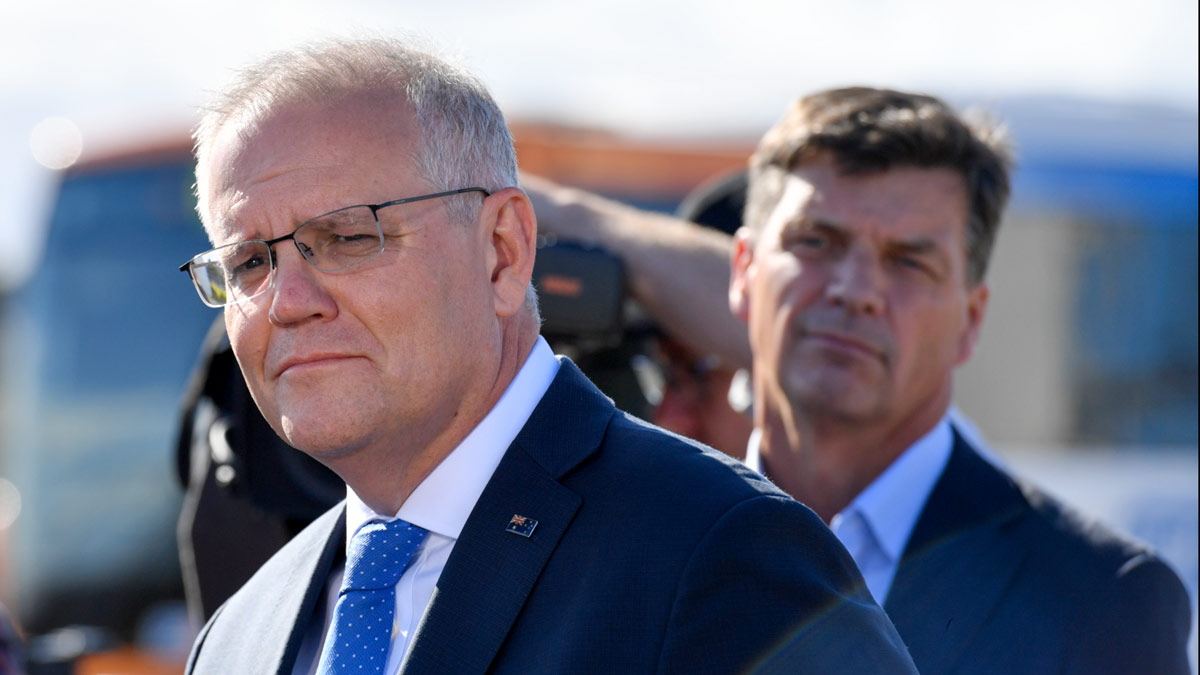Last May. the Federal Government announced Snowy Hydro’s gas power station at Kurri Kurri as a signature project in its ‘gas-led recovery’.
During the election campaign the Prime Minister, Scott Morrison, and the energy minister, Angus Taylor, have been frequently promoting Kurri Kurri as central to the government’s energy policy.
But is the PM aware that information (quietly) released last month confirm that the total cost will be almost double the initial estimate of $600 million, that the power station will be incapable of long-duration generation; and that it cannot be converted to hydrogen?
These latest revelations are contained in the Environmental Impact Statement (EIS) for the 20-kilometre lateral connection to be built from the Sydney-Newcastle trunkline to the power station, and an associated storage system.
The EIS, prepared by APA Transmission (the infrastructure company contracted by Snowy Hydro), estimates the cost of this trunkline to be approximately $264 million.
Snowy Hydro had not included the gas connection and storage in its $600 million estimate for Kurri Kurri, even though the power station is stranded without it. (When pressed on the issue at Senate Estimates, Snowy Hydro management said the cost would be “around $100 million”.)
After other costs are also included, such as the gas offtake, APA’s profit margin, the electricity substation, financing, and contingencies, the cost of the total project exceeds $1 billion.
This blowout continues Snowy Hydro’s woeful record of underestimating costs – though not yet to the staggering scale of Snowy 2.0, whose total cost (including transmission) has rocketed five-fold from $2 billion, with another increase in budget and completion date imminent.
Tellingly, there have been no politicians at the Kurri Kurri site in hi-vis vests acclaiming this latest expenditure boost and construction jobs, despite being in the middle of an election campaign.
Gas industry insiders already knew that the gas supply to the power station would be a trickle, being near the end of the notoriously overloaded trunkline from Sydney, and that a massive storage system would be needed.
Snowy Hydro initially proposed a storage sized to power the generators for six to seven hours at full output. This ridiculously short duration was universally criticised for a power station to be run supposedly over lengthy periods when ‘the sun isn’t shining or the wind blowing’.
APA’s EIS now proposes a storage of ten hours, still of limited value. Most gas power stations have sufficient gas supply to generate continuously. Kurri Kurri will be outcompeted by such stations and also by emerging batteries.
To add to Kurri Kurri’s crippling limitations, whenever its storage is emptied it will take more than a day to refill, assuming gas is available.
If another gas power station is urgently needed for the National Electricity Market, which it isn’t, why locate it 20 km from a (limited) gas supply, needing over a quarter of a billion dollars of pipelines just to attain 10 hours operation, and be incapable of generating on-demand, long-duration, dispatchable power?
The EIS also quashes the claim that Kurri Kurri will be ‘hydrogen-ready’, just waiting for the day that hydrogen becomes available.
Quoting from the EIS: “Snowy Hydro have advised that the associated level of capital expenditure would be uneconomic, and consequently the storage pipeline will not be built to specifications that would enable it to store hydrogen blended fuel”.
No doubt Labor will be alarmed by this revelation. Its backflip on Kurri Kurri was based on the expectation that the power station will be converted to run on a 30% green hydrogen blend when commissioned in 2023 and then entirely on hydrogen by 2030.
Labor was even prepared to kick in another $700m even though it made no sense.
In short, Kurri Kurri cannot be converted to hydrogen.
These revelations in the APA EIS add to the already extensive list of flaws.
Energy analysts say it’s not needed, as there will be no supply gap when Liddell closes in 2023 (recently re-affirmed by AEMO);
Economists say it won’t lower electricity prices and cannot possibly pay for itself; taxpayers don’t want their money squandered;
Energy industry participants say the government shouldn’t intervene in the market nor play favourites with its own company;
Locals say the Hunter Valley doesn’t want another noisy, polluting fossil-fuel power station even with its 10 jobs;
And our youth plead that the atmosphere can’t take any more greenhouse gases (the station’s lifetime extends well beyond the 2050 net-zero target).
How will the major parties respond to these latest revelations?
Will the Coalition persist regardless, to avoid a loss of face? Will Labor reverse its stance (again) as its expectations for hydrogen conversion have been dashed?
Surely sense will prevail and both parties will now withdraw their support for yet another taxpayer-funded Snowy Hydro White Elephant.
Ted Woodley is a former managing director of GasNet, PowerNet and EnergyAustralia










